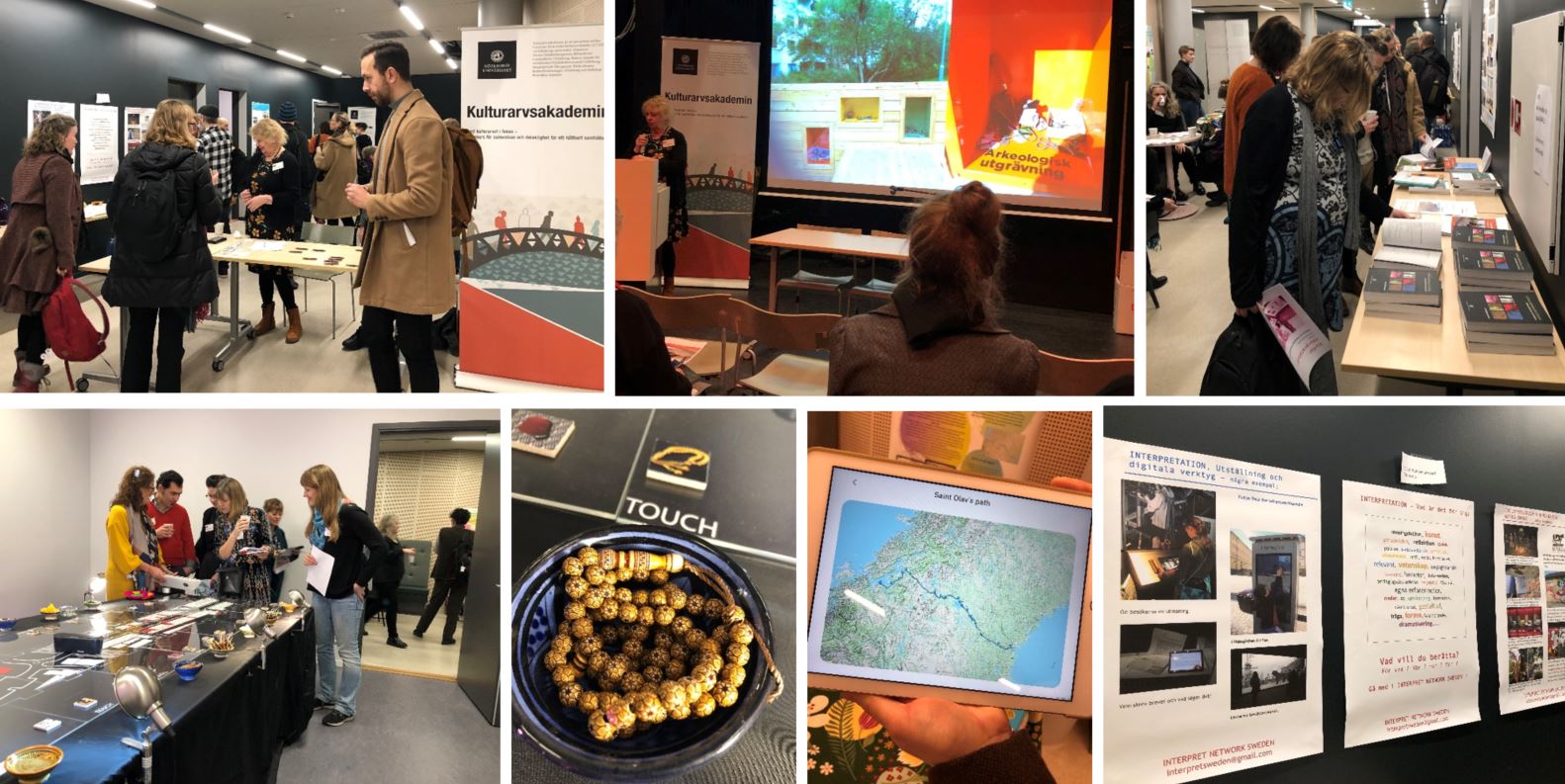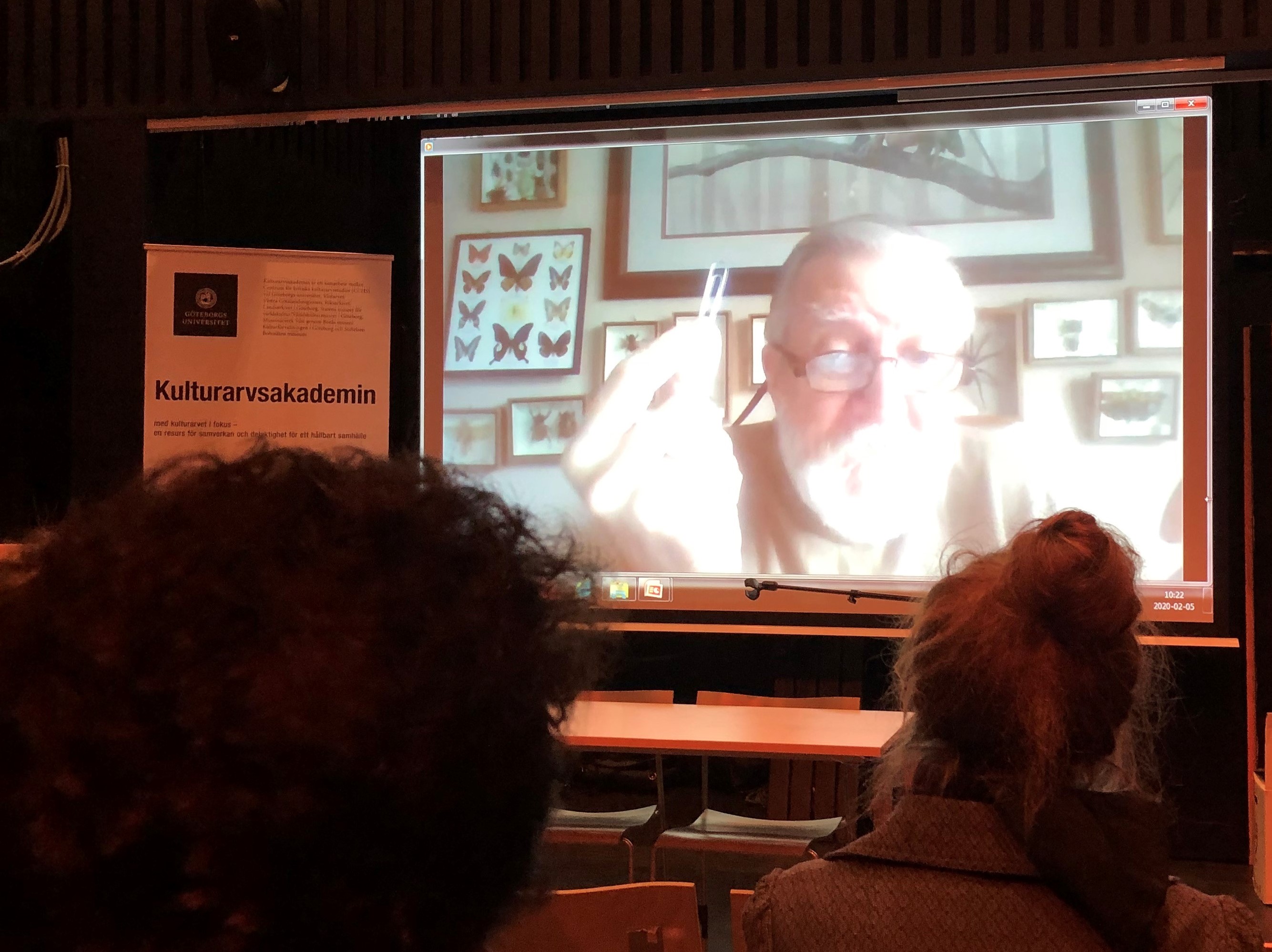- Home
- News and events
- Find news
- The Heritage Academy launches the ISN - Interpret Sweden Network
The Heritage Academy launches the ISN - Interpret Sweden Network
On February 5, researchers, museum educators and nature guides gathered to discuss the possibilities of setting up a new national network for interpretation.
About 70 people joined the event to a keynote by John Veverka (Veverka Associates USA) on the theme "Why interpretation", explore exhibitions on interpretation, take part in a conversations about what interpretation can be and in a wokshop discuss how to proceed with the formation of a Swedish network.
The organizers Anita Synnestvedt (CCHS / Heritage Academy), Aleka Karageorgopoulos (Yayaca Culture & Communication) and Paul Henningsson (musedia) have previously met at various workshops organized by the CCHS / Heritage Academy and Vitlycke Museum on interpretation conserning world heritage sites. Their idea of starting ISN was emerged during these workshops and they all see a need to create a more organized collaboration around interpretation in Sweden and to link this to the networks and communities that exists internationally, not least through the European Association for Heritage Interpretation (Interpret Europe) and the Association of Heritage Interpretation. The organizers started the day with a presentation about why they personally became interested in interpretation, how they have worked with interpretation and what has been their input into setting up the network.

In Sweden, for example, the Swedish University of Agricultural Sciences (SLU) and the Swedish National Heritage Board (RAÄ) have had interpretation projects within their organisations. Eva Sandberg from the Center for Nature Guidance (CNV) described their activities and why they chose to work with interpretation. Eva also presented the project they had for several years in collaboration with Sam Ham from the USA.
Charlotte Ahnlund Berg from the Swedish National Heritage Board reported, among other things, on their projects around Birka / Hovgården and the collaboration with James Carter on interpretation in 2017. RAÄ believes that the concept involves a method and approach that supports cultural environmental work.
In the afternoon a workshop was held where participants reflected about what interpretation can be and what they would find valuable with a network. Results of the workshop will be presented at upcoming events.
The exhibitors during the day were students from the Digital Humanities program at the University of Gothenburg. They presented ongoing and completed projects whose purpose was to shape, activate and visualize the cultural heritage in different ways.
Artist and researcher Alda Terracciano (active in the CCHS archive cluster) presented the interactive work Zelike Door on Golborne Road. The installation is an interactive, multisensory installation, which explores various aspects of Moroccan heritage and culture. Zelige Door on Golborne Road consists of a map of Golborne Road, which has been populated by objects relating to Moroccan heritage and culture, and uses Augmented Reality to construct a living museum of cultural memories to be experienced through the senses.

Why interpretation - reflections from the day
John Veverka is one of the foreground figures within cultural heritage interpretation and he describes the work with the words: “Interpreters are story tellers and agents of change. We teach people why, how and where.” With the example of a clip, he tells the history of how this small object is much more than a clip for holding together paper. It is also a symbol of cohesion and struggle used by the resistance movement in Norway and put in the rock sleeve during the Second World War.
Aleka Karageorgopoulos describes interpretation as interpretation and living.
– Interpretation is more like a meeting between people that initiate processes, says Aleka. If we manage to affect people, we also encourage interest and commitment.
Eva Sandberg described interpretation as fact-based storytelling.
Looking ahead
– Anita, what are the plans for the future?
– We are primarily planning for a follow-up day on April 22, where we venture into the cultural environment to discuss on site how the network can be developed and formed in the future. On April 22, a bus from Gothenburg will go to different environments in northern Halland where we will meet, among others, officials in the municipality of Kungsbacka and representatives of different heritage sites to discuss how they look upon the design, interpretation and availability of cultural heritage and environments. We also have material from the workshop on February 5 which we will put together to also see what ideas the participants had about the network and interpretation.

Image collage: pictures from the exhibitions and the organizers' presentations.
Photo: John Veverka presents his keynote via web link. Here he gives an interpretation of the clip. Photos by Jenny Högström Berntson
Links and tips for further reading:
Association of Heritage Interpretation
European Association for Heritage Interpretation (Interpret Europe)
Swedish National Heritage Board text: Interpretation, en utveckling av kulturmiljöer